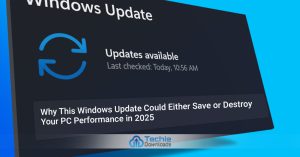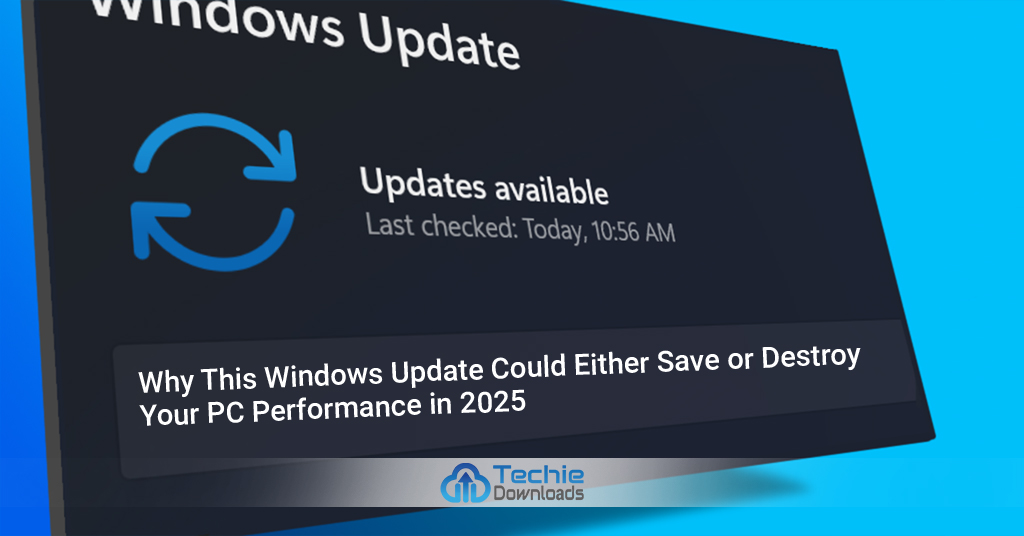Every few months, your computer asks for a Windows update. These updates promise new features, better security, and smoother performance. But sometimes, they cause headaches instead of help. Are Windows updates your PC’s best friend or its silent enemy? The Windows 2025 update could do both. This update offers exciting improvements but also carries real risks. Knowing what to expect is key to protecting your system and making the most of these changes. Don’t let a rushed update ruin your device or miss out on future benefits.
What Makes the 2025 Windows Update a Game-Changer?
Microsoft announced bold plans for the 2025 Windows update. It promises to bring fresh tools and smarter features to your PC. This update isn’t just a patch; it’s a major step in how Windows works. Experts say it might change the way users experience their computers forever. The right Windows Update can boost efficiency, speed, and even battery life. The wrong one? Well, it might slow your system down or cause crashes.
The Innovation Wave: New Features Designed to Boost Performance
Cutting-edge performance enhancements and AI integrations
One of the biggest promises is using artificial intelligence to help your PC run faster. These new AI tools are designed to analyze how you use your computer and help it become more responsive. For example, games and programs should load quicker, and multitasking will feel smoother. The update also focuses on smart resource management, making sure your system isn’t wasting power on unnecessary tasks.
Enhanced security measures to prevent system slowdowns
Security is another top focus. Microsoft rolled out tougher protections to stop malware and hacking. These measures keep your system safer from threats. But they can also add extra steps that sometimes slow down your device. Striking the right balance between security and speed is key here, and the 2025 update aims to do just that.
The Risks of Untested Technologies
While new tech sounds great, it can come with bugs. Many past updates have caused unexpected problems. Instead of fixing issues, they sometimes created new ones. Windows updates can introduce bugs that cause crashes, lags, or software conflicts. Early adopters might find their systems slower or unstable after installing the update.
Potential bugs and compatibility issues
Older hardware or programs might not work well with the new code. For instance, drivers for printers or graphics cards may become incompatible. Some users have faced data loss or system freezes after an update. These problems often get fixed quickly but only if you’re prepared.
The impact of forced updates on user control
Microsoft tends to push updates automatically. This means you may not have a choice when your PC updates. Forced updates can surprise you with new issues or performance drops at inopportune times. Some users reported longer update times or sudden system restarts that interrupted their work. Staying aware of these risks is essential before hitting “install now.”
How the 2025 Update Could Save Your PC

The good news? If you prepare properly, this update might extend your PC’s life and save money in the long run. Better hardware efficiency means less wear and tear. Plus, faster, more efficient software can lower your power bills.
Precise improvements that could prolong hardware lifespan
Optimized resource management reduces strain on your CPU and hard drive. This can help prevent overheating and hardware failure. Many early testers reported their laptops lasted longer between charges after installing the update.
Increased efficiency leading to lower energy consumption
AI-driven features adapt to your habits, cutting down on unnecessary work. This smarter approach helps your device use less energy, making it more eco-friendly and saving you money on electricity.
Real-world success stories from early adopters and beta testers
Some users who installed the update early reported noticeable boosts. They saw faster startup times, better battery life, and fewer crashes. These positive results show that, with caution, the Windows Update can improve your PC’s performance.
Optimizing Settings to Maximize Benefits
Pre-installation preparation tips
Before updating, back up all your files. Running a system check can identify potential issues. Also, make sure your device drivers are up to date to avoid conflicts.
Post-update configuration adjustments
After installing the update, review your system settings. Disable unnecessary features that slow down performance. Turning off background apps or visual effects can give your system a boost.
The Role of AI and Machine Learning in System Boosts
AI tools don’t just set-and-forget. They learn your habits and adapt. For example, they can prioritize important tasks or allocate resources effectively. Experts see this as a huge step forward, making your PC smarter and more responsive over time.
How the 2025 Update Could Destroy Your PC’s Performance
Despite the positives, dangers lurk in new tech. Bugs can cause unexpected bugs that slow down your machine or even corrupt files. Increased resource demands might make older systems sluggish.
Hidden risks lurking within new code and features
Complex features sometimes hide flaws. These flaws can cause system freezes or data corruption. The more advanced the feature, the more chances there are for things to go wrong.
The possibility of increased system resource consumption leading to sluggishness
Some new tools require more memory and processing power. On older computers, this could bottleneck performance, making your PC feel much slower than before.
The danger of updates conflicting with legacy hardware or software
New Windows Update might break compatibility with older printers, cameras, or apps. This could mean buying new hardware or rewriting software. For many, that can be costly and frustrating.
Common pitfalls and user mistakes
- Ignoring update warnings or skipping steps
- Forgetting to update device drivers beforehand
- Not monitoring performance after updating
Real-World Failures and Lessons Learned
Past update blunders include data loss and sudden hardware failures. These incidents teach us to be cautious and prepare properly. Microsoft has fixed many issues fast, but risks remain.
Expert Insights and Industry Predictions
Leading tech pros warn that early updates might cause glitches. Some believe Microsoft will improve stability over time, but users should stay alert. IT specialists advise creating full backups before updating and testing the system afterward. Long-term, updates can stabilize performance if handled carefully, but rushing in can backfire.
Actionable Tips to Safeguard Your System During the Update
- Create a complete backup of your data before starting.
- Perform a clean install if possible for better stability.
- Follow a step-by-step guide to update correctly.
- Post-install, run system checks to catch issues early.
- Use third-party tools to monitor temperature, speed, and errors.
- Update device drivers before installing the Windows update.
- Keep a recovery point ready in case you need to revert.
